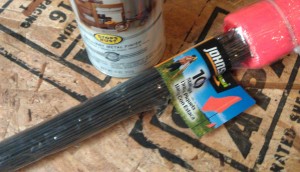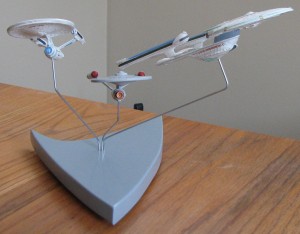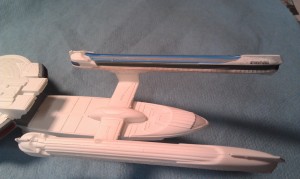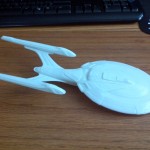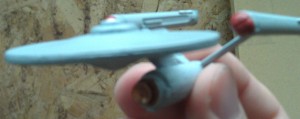Even though I finished the A and B models in April, I only just now got around to writing it up. This was because the kit didn’t come with a stand, and while I knew what I wanted to do for a display, I couldn’t figure out how to build it. So the models ended up going back in their box and sitting on a bookself and I didn’t have the interest needed to go through all of the photos I took to write the posts.
Recently though I got an idea from my dad. He’s been making remote controlled model airplanes from foam and was using the wires from yard stakes for wheel and wing struts. These happened to be exactly what I was missing in order to make the stand I wanted.
Clip the flag off the end, easily bendable, mall enough to work with the Original Series model, strong enough to hold their shape. I also spray painted them with silver appliance enamel to pretty them up a bit.
One of the clipped wires also made a good drill bit so that the holes I put in the bottom of each model was an exact fit.
For the actual base I found a black and white Starfleet emblem online, printed it out, and glued it to a piece of pine with rubber cement. I used a jigsaw freehand to cut out the symbol and then sanded the curves and the pattern off the top.
I really couldn’t be happier with how it turned out, especially since that’s the first time I’ve cut a pattern like that. All of the woodworking I’ve done before now has been cabinets and picture frames.
The next step was to get a wire bent and mount one of the models to see if it would work.
I drilled two more holes in the base to check out all three ships, then it was time for painting. I may have over done it a little bit, but in the end I used two coats of white primer, three coats of grey paint, and two coats of clear lacquer.
I made a lot of mistakes on the first model, a few less on the second, and a few less on the third. But seeing them all together like this and sitting on my desk, I don’t notice any of them.
